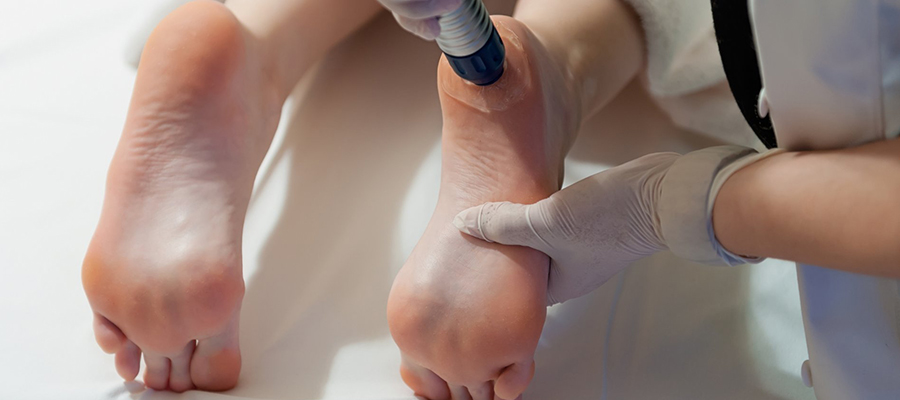
Estimated reading time: 4 minutes and 3 seconds
Heel Spur Treatment
Comprehensive Heel Spur Treatment at Aktif International Hospitals
Heel spurs, also known as calcaneal spurs, are bony protrusions that develop on the underside of the heel bone. While heel spurs themselves may not always cause pain, they can lead to discomfort and inflammation of the surrounding tissues, particularly the plantar fascia—a thick band of tissue that connects the heel to the toes. At Aktif International Hospitals, we offer comprehensive heel spur treatment to alleviate pain, reduce inflammation, and improve mobility for our patients.
Frequently Asked Questions
What causes heel spurs, and why is treatment important?
Heel spurs develop as a result of long-term strain and repetitive stress on the foot, leading to the formation of calcium deposits on the underside of the heel bone. Factors contributing to heel spur development include:
- Foot structure: Flat feet, high arches, or abnormal gait patterns can increase the risk of heel spurs.
- Overuse or repetitive activities: Activities that place excessive strain on the feet, such as running, jumping, standing for long periods, or wearing improper footwear, can contribute to heel spur formation.
- Age: Heel spurs are more common in older adults due to natural wear and tear on the feet and changes in foot anatomy.
Treatment is important to alleviate pain, reduce inflammation, and prevent complications associated with heel spurs, such as plantar fasciitis (inflammation of the plantar fascia) and chronic foot discomfort.
Who can benefit from heel spur treatment?
Individuals experiencing heel pain, especially upon waking in the morning or after prolonged periods of rest, may benefit from heel spur treatment. Common symptoms of heel spurs include:
- Pain or tenderness: Underneath the heel or along the arch of the foot, especially with weight-bearing activities.
- Swelling: Inflammation and swelling of the heel area, particularly after physical activity.
- Stiffness: Difficulty flexing or moving the foot, particularly in the morning or after periods of inactivity.
- Discomfort: While walking, standing, or engaging in activities that place pressure on the heels.
What are the treatment options for heel spurs?
Treatment for heel spurs may include:
- Rest and activity modification: Avoiding activities that exacerbate symptoms, such as high-impact sports or prolonged standing, and incorporating rest breaks into daily routines.
- Orthotic devices: Customized shoe inserts or orthotic devices designed to provide support, cushioning, and proper alignment of the feet to relieve pressure on the heels and reduce strain on the plantar fascia.
- Stretching exercises: Gentle stretching exercises targeting the calf muscles, Achilles tendon, and plantar fascia to improve flexibility, reduce tension, and alleviate heel pain.
- Physical therapy: Targeted physical therapy interventions, such as ultrasound therapy, massage, and strengthening exercises, to reduce inflammation, improve mobility, and promote healing.
- Medications: Nonsteroidal anti-inflammatory drugs (NSAIDs), corticosteroid injections, or topical creams to reduce pain, inflammation, and discomfort associated with heel spurs.
- Surgical intervention: In severe cases of heel spurs resistant to conservative treatments, surgical procedures such as plantar fascia release or heel spur removal may be considered to relieve symptoms and restore foot function.
How is heel spur treatment determined at Aktif International Hospitals?
At Aktif International Hospitals, our team of orthopedic specialists, podiatrists, and healthcare professionals specializes in diagnosing and treating heel spurs. Treatment plans are personalized based on thorough evaluations, including:
- Medical history review: Evaluation of the patient’s symptoms, medical history, lifestyle factors, and previous treatments for heel pain.
- Physical examination: Assessment of foot structure, range of motion, gait analysis, and palpation of the heel to identify areas of tenderness and inflammation.
- Diagnostic imaging: X-rays, ultrasound, or MRI scans to visualize the heel bone and surrounding tissues, confirm the presence of heel spurs, and rule out other foot conditions.
Why choose Aktif International Hospitals for heel spur treatment?
Aktif International Hospitals is committed to providing compassionate, patient-centered care for individuals with heel spurs. Our experienced orthopedic specialists, podiatrists, and multidisciplinary team collaborate to deliver comprehensive treatment tailored to each patient’s unique needs and goals. Whether through conservative therapies, orthotic devices, physical therapy, or surgical intervention, we strive to alleviate pain, restore function, and improve the quality of life for our patients with heel spurs.
Trust Aktif International Hospitals for Comprehensive Heel Spur Treatment
If you’re experiencing heel pain or suspect you may have heel spurs, trust Aktif International Hospitals to provide expert evaluation, diagnosis, and treatment options tailored to your needs. Schedule a consultation with our orthopedic specialists or podiatrists today and take the first step towards relieving heel pain and improving your foot health.
Author: Tuncay Akalan


 TR
TR FR
FR ES
ES RU
RU RO
RO